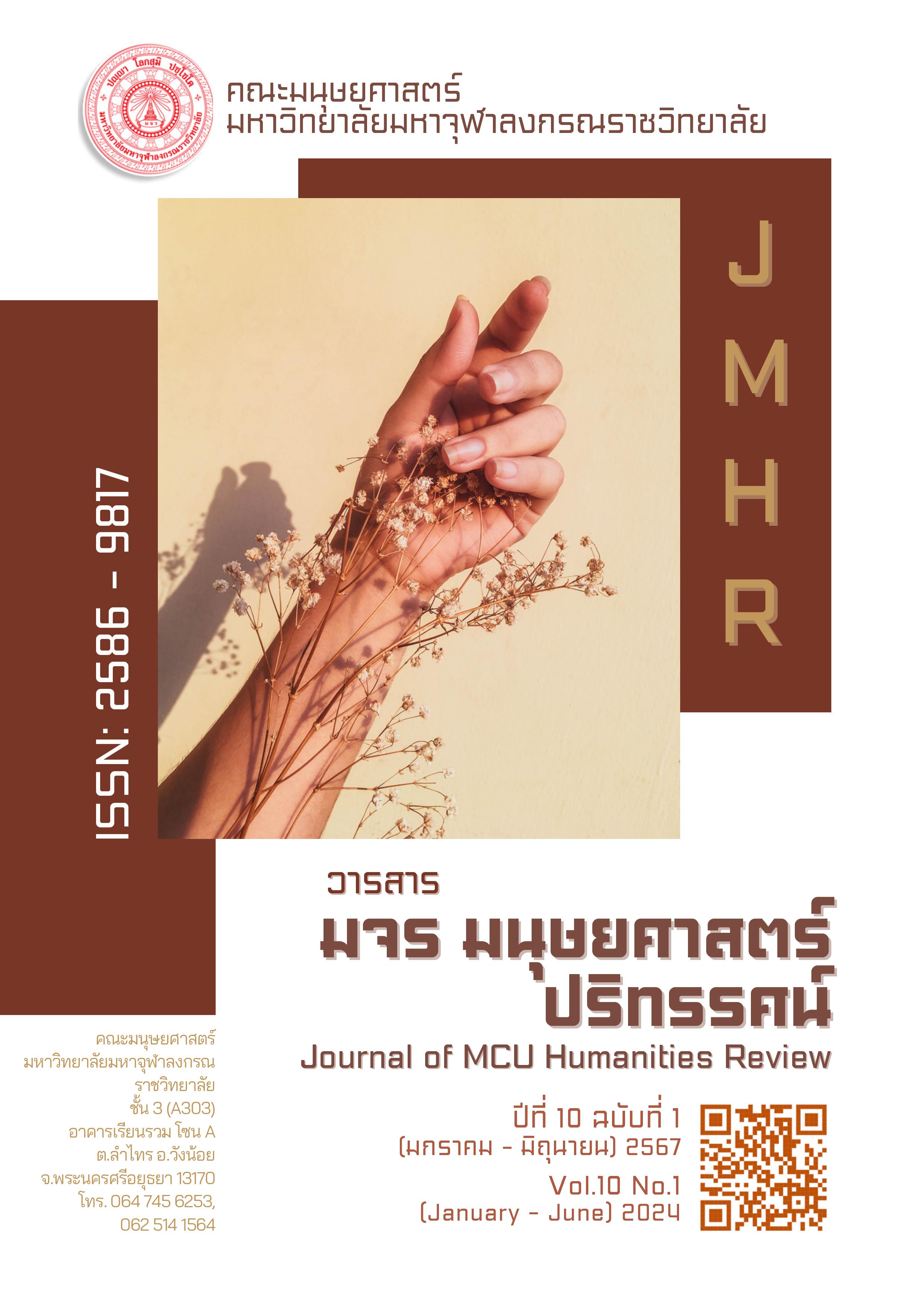Social Studies Teaching Based on Buddhist Principles with the 5-Step PSLDC Model
Keywords:
Practices for Teaching Social Studies, Buddhist Principles, PSLDC ModelAbstract
Practices for teaching social studies are processes or activities that teachers use to promote student learning in social studies. Emphasis is placed on allowing students to learn through real experiences. It is an effective method to help students understand complex concepts and create a deeper, sustainable understanding using the PSLDC Model technique, 5 steps to success. It is a flexible learning management format. Can be adjusted to suit the context of the educational institution and the target group of learning. The author designed it consists of 5 steps: Step 1 P: Plan is the step where the teacher determines learning objectives, content, learning activities. learning media and evaluation of learning outcomes. Step 2 S: Structure Structure is the step in which the teacher designs the learning structure. By considering the learning objectives, content and learning activities. Step 3 L: Link is the step where the teacher connects previous knowledge with new knowledge. By considering the content and learning activities. Step 4 D: Design is the step in which the teacher designs learning activities. By considering the learning objectives, content, learning structure. and the students' prior knowledge and Step 5 C: Conclusion. Summarizing the results is the step where the teacher summarizes the learning results. By considering learning activities and learning evaluations. Learning management according to the PSLDC model, 5 steps to success Helps students learn efficiently. The teacher must plan the learning management carefully and design a variety of learning activities. Connect previous knowledge with new knowledge. and summarize the learning results of the students
References
กระทรวงศึกษาธิการ. (2560). หลักสูตรแกนกลางการศึกษาขั้นพื้นฐาน พุทธศักราช 2551 ฉบับปรับปรุง พ.ศ. 2560. กรุงเทพฯ : สำนักงานคณะกรรมการการศึกษาขั้นพื้นฐาน.
จุฑาพร เกตุแก้ว. (2561). สอนสังคมศึกษาอย่างไรให้เด็กคิดวิเคราะห์ (พิมพครั้งที่ 2). กรุงเทพฯ : สำนักพิมพ์ ซีเอ็ดยูเคชั่น.
ปาณจิตร สุกุมาลย์. (2565). การบูรณาการหลักพุทธวิธีการสอนในการสอนสังคมศึกษา. วารสาร มจร อุบลปริทรรศน์, 7(1), 977 - 990.
บุญรอด บุญทวี. (2559). ทฤษฎีและแนวทางการสอนสังคมศึกษา. กรุงเทพฯ : สำนักพิมพ์มหาวิทยาลัยรามคำแหง.
พระครูอุทิตปริยัติสุนทร. (2566). การออกแบบการเรียนรู้เชิงรุกด้านการทำงานเป็นทีมรายวิชาพระพุทธศาสนาชั้นมัธยมศึกษาปีที่ 5 ของโรงเรียนมัธยมศึกษาในจังหวัดอุทัยธานี (รายงานการวิจัย). สถาบันวิจัยพุทธศาสตร์: มหาวิทยาลัยมหาจุฬาลงกรณราชวิทยาลัย.
พระมหาโกวิทย์ ฐานเมธี. (2565). พุทธปรัชญากับศาสตร์การสอนสังคมศึกษา. วารสาร มจร อุบลปริทรรศน์, 7(3), 257 - 268.
ราชกิจจานุเบกษา. (2562). พระราชบัญญัติการศึกษาแห่งชาติ พ.ศ. 2542 (ฉบับที่ 4) แก้ไขเพิ่มเติม พ.ศ. 2562. เล่มที่ 130 ตอนที่ 57 ก หน้า 1, ลงวันที่ 18 สิงหาคม พ.ศ. 2562.
วลัย อิศรางกูร ณ อยุธยา. (2554). หลักการและแนวทางการสอนสังคมศึกษา. กรุงเทพฯ : สำนักพิมพาจุฬาลงกรณ์มหาวิทยาลัย.
สถาบันส่งเสริมการสอนวิทยาศาสตร์และเทคโนโลยี. (2564). แนวทางการจัดการเรียนรู้วิชาสังคมศึกษา ศาสนาและวัฒนธรรม. กรุงเทพฯ : สถาบันส่งเสริมการสอนวิทยาศาสตร์และเทคโนโลยี.
สุรพล กาญจนกูล. (2561). การประยุกต์ใช้หลักพุทธปรัชญาในการจัดการเรียนรู้สังคมศึกษา. วารสารมหาวิทยาลัยราชภัฏสวนสุนันทา, 26(2), 121-134.
Downloads
Published
How to Cite
Issue
Section
Categories
License
Copyright (c) 2024 Journal of MCU Humanities Review

This work is licensed under a Creative Commons Attribution-NonCommercial-NoDerivatives 4.0 International License.






